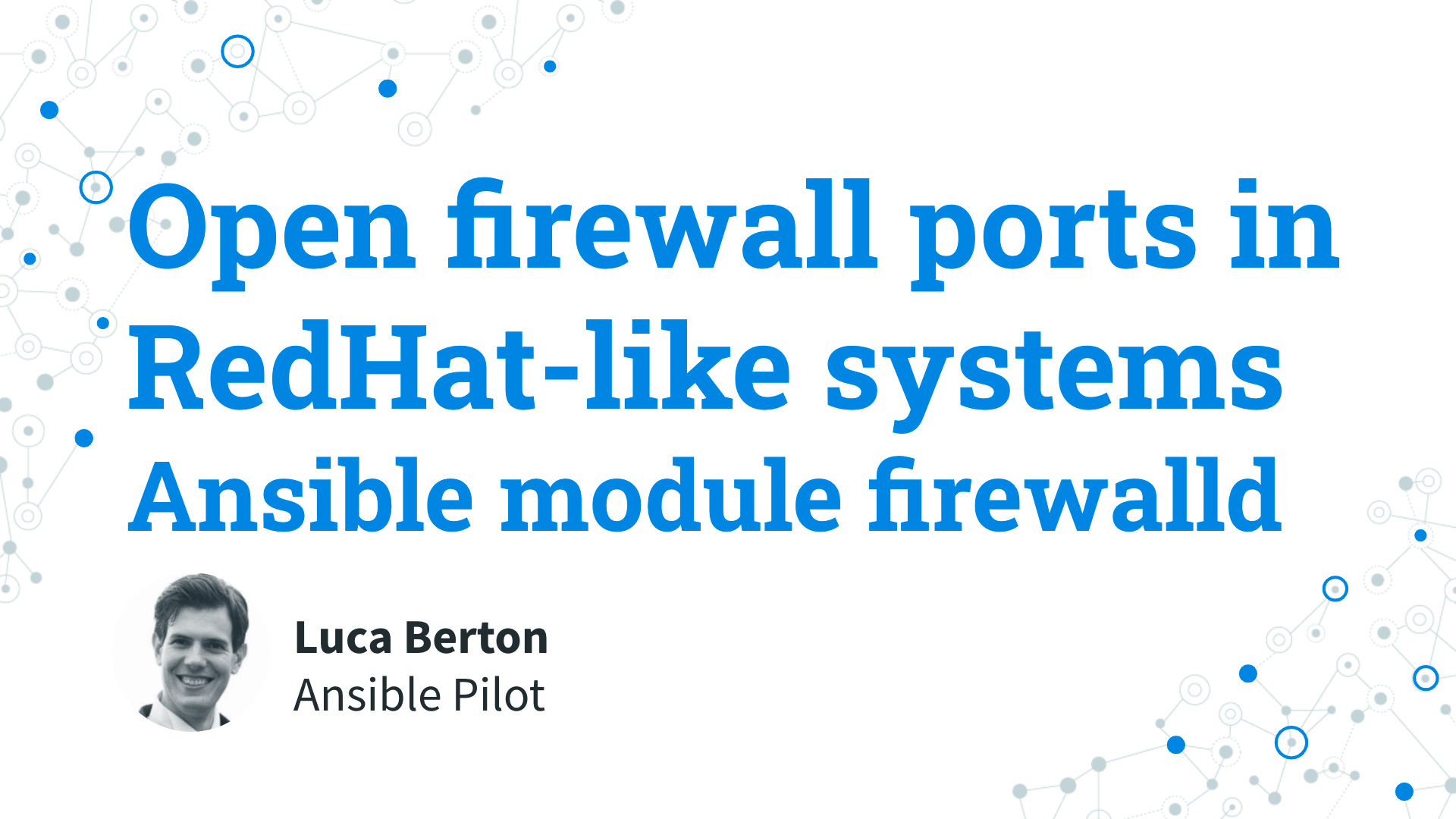How to open firewall ports in RedHat-like systems with Ansible?
I’m going to show you a live Playbook and some simple Ansible code. I’m Luca Berton and welcome to today’s episode of Ansible Pilot.
Ansible open firewall ports in RedHat-like systems
Today we’re talking about the Ansible module firewalld.
The full name is ansible.posix.firewalld, which means that is part of the collection targeting POSIX platforms. This module requires Ansible 2.9+.
It works in RedHat-like systems with firewalld >= 0.2.11 and python firewalld bindings.
It manages arbitrary ports/services with firewalld.
Parameters
- state string - enabled / present / absent / disabled
- service string - firewall-cmd - get-services
- port string - PORT/PROTOCOL or PORT-PORT/PROTOCOL
- permanent boolean - no/yes
- immediate boolean - no/yes
The parameter list is pretty wide but these are the most important options for our use case to open firewall ports. The “state” parameter is mandatory and specifies to enable or disable a setting. The options “enabled” accept and “disabled” reject connections for ports. The options “present” and “absent” are for zone-level operations. The “service” parameter specifies the name of a service to add/remove to/from firewalld. For the full list please use “firewall-cmd - get-services”. The “port” parameter specifies the name of a port or port range to add/remove to/from firewalld. The format is PORT/PROTOCOL so for example 80/TCP for HTTP connections. You could also specify a range with PORT-PORT/PROTOCOL. The “permanent” parameter defines if the configuration should persist across reboots. Note that if “permanent” is no, “immediate” is assumed yes. The “immediate” parameter applies immediately to the configuration of the system.

Playbook
Let’s jump in a real-life Playbook about how to open firewall ports in RedHat-like systems with Ansible Playbook.
- verify-firewall.sh
# firewall-cmd --state
# systemctrl status firewalld
# firewall-cmd --list-all
# firewall-cmd --list-services
# dnf info nginx
- firewalld.yml
---
- name: firewalld module Playbook
hosts: all
become: true
tasks:
- name: nginx installed
ansible.builtin.yum:
name: nginx
state: present
- name: firewalld rules
ansible.posix.firewalld:
service: "{{ item }}"
state: enabled
permanent: true
immediate: true
with_items:
- http
- https
Conclusion
Now you know how to open firewall ports in RedHat-like systems with Ansible. Subscribe to the YouTube channel, Medium, and Website, X (formerly Twitter) to not miss the next episode of the Ansible Pilot.
Academy
Learn the Ansible automation technology with some real-life examples in my
Udemy 300+ Lessons Video Course.

My book Ansible By Examples: 200+ Automation Examples For Linux and Windows System Administrator and DevOps

Donate
Want to keep this project going? Please donate
